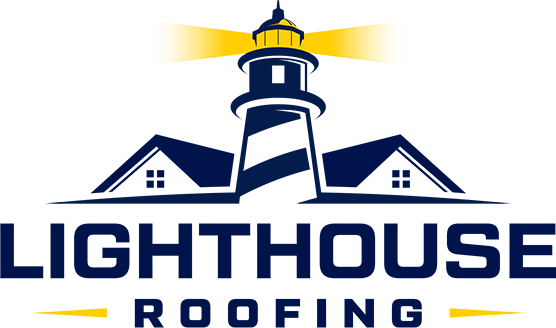When it's time to talk to a contractor about a roof repair or replacement, knowing the components of a roof and how they help protect your home can help you navigate the decisions you need to make throughout the process. Here at Lighthouse Roofing, we want you to be educated while you navigate through the roofing process whether you use us or one of our fellow competitors here in the Coastal Bend.
What Is the Purpose of a Roofing System?
The main purpose of a roofing system is to shield buildings — and the people and things inside them—from the exterior climate or weather conditions. This includes immediate protection from wind, rain, hail, snow, heat, cold, and sun — as well as the long-term impacts of these weather elements. The roofing system must also be able to shed moisture and provide insulation. As the name suggests, a roofing "system" is composed of several components of a roof that work together to provide the best overall protection (as well as curb appeal!) for your home.
What Are the Structural Components of a Roof?
Before you approach a contractor, it pays to have a basic understanding of the anatomy of your roof. To begin, here are the principal parts making up its underlying structure:
- Rafters: The framework of internal beams running from the ridge (the peak) of the roof to the eave (the edge). Rafters form the base of a roof's supporting structure.
- Roof truss: A popular alternative to rafters, these structural roof components are shorter and often lighter. Using them means the roof's weight can be distributed to the external rather than internal walls, which allows architects more freedom when designing interior living spaces. Truss frameworks are made up of three or more pieces, usually in the shape of a triangle. As with rafters, they support the roof decking and structure.
- Decking/sheathing: The structural base of the roof that the roofing components are installed over and secured to. Decking or sheathing is usually made from plywood, oriented strand board (OSB), or wood plank. Along with the roof's structural framework, it is designed to support the load of the roof, snow load, and any other loads required by local code.
- Eave: The edges of a roof that overhang the wall. They help to distribute rainwater away from the main structure of your home.
- Fascia: Roof fascia are long boards, usually made of wood, metal, or vinyl, that are attached to the roof eaves to cover exposed rafters or trusses. As well as providing a finished look, fascia are used as stable supporting surfaces for gutters.
- Rake: The inclined edges of a gable-style roof — essentially the A-frame visible from outside. A gable-style roof has two sloping sides that meet at the top of the "triangle," and the rakes can either overhang or be flush with the wall.
What Are the Components of a Roofing System?
A roofing system consists of various components that help protect your home from the elements.
- Roof deck protection: Asphalt-saturated felt or a synthetic material that provides a water-shedding secondary layer of protection between the shingles and roof deck to prevent wind-driven rain from infiltrating.
- Shingles: These are typically made of asphalt, fiberglass mat, and ceramic-coated granules. Shingles act as the primary roof covering and are installed in overlapping layers to protect the structure and help ensure proper water shedding.
- Starter strip shingles: The first course of roofing installed at the eave or rake edges of a shingle roof to improve wind resistance.
- Hip and ridge cap shingles: Shingles designed for installation over the ridge and hip areas of the roof where two roof planes meet.
- Leak barrier: A self-adhered waterproof underlayment typically installed on top of the roof deck at the eave edge of the roof and other vulnerable areas. This helps protect against leaks caused by wind-driven rain and ice dams.
- Ventilation: A balanced system of intake and exhaust vents that allows air to continuously flow through the attic space in order to exhaust excess heat and moisture.
What Is the Best Roofing System for You?
The right roof system for your home depends on several variables, including:
- The local climate
- The amount of roof exposure and location of trees and other vegetation
- Your home's floor plan and height
- The amount of attic space
Contact a local roofing contractor to help determine the best system for your home.
What Is the Most Common Type of Roofing Material?
Asphalt shingles are the most common type of roofing material used for homes. They are durable, lightweight, and effective in providing protection from the elements. When used with the other components of a complete system, they offer moisture protection and insulation.
Asphalt shingles are also aesthetically versatile, meaning they suit and allow for a wide variety of building styles, decors, and colors.
What Should You Consider When Selecting Materials?
Many factors go into deciding what materials to choose for your roof. You'll receive guidance from your contractor on the types of materials that will be best for your home, but here are three important elements to consider.
Cost
In most cases, asphalt shingles are the most economical choice for a residential roof. If you are interested in a different aesthetic or live in certain regions, you may want to consider other options such as slate, tile, wood shakes, or metal.
Warranty Terms
The standard manufacturer's warranty on asphalt shingles will likely last for anywhere between 20 years to "Lifetime." However, you should always be sure to review the specific terms of the warranty before making a final decision, as the specific coverage will likely vary significantly. You may also consider asking your contractor about the availability of enhanced warranties, which may provide longer or more comprehensive coverage than the standard manufacturer's warranty.
Maintenance and Repairs
Most residential roofing systems are relatively low maintenance; however, you may consider inspecting your roof at least twice a year and after significant weather events to look for damage or necessary repairs.
Whether you're in need of a complete roof replacement or just a few repairs, always consult a local roofing company when considering a change to your roof. Also consider manufacturer certifications, online reviews and memberships to Better Business Bureau or the Roofing Contractors Association of Texas (RCAT). Lighthouse Roofing is a GAF Master Elite Roofing Company, has an A+ Rating with the BBB and proud members of RCAT!
Contact Lighthouse Roofing today to schedule a no pressure, roofing consultation today!
Lighthouse Roofing
361-657-0091
10514 South Padre Island Drive Suite G14
Corpus Christi TX, 78418
www.lighthouseroofingcompany.com


